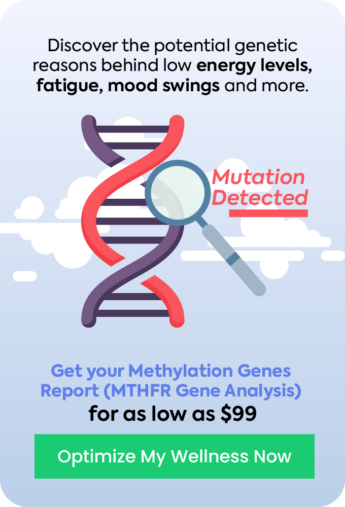A 2023 UK Biobank (UKB) based study published in the journal Communications Biology focuses on enhancing the estimation of biological age. Biological age is the equivalent age within the same-sex population corresponding to an individual’s mortality risk, with values ranging from 20 years younger to 20 years older than chronological age.
This practical and cost-efficient method provides an accessible way for the general population to estimate an improved measure of biological age using readily available blood markers. In this article, we will explore various aspects of the study and examine its implications for us.
Biological vs. Chronological Age
Biological age and chronological age are two different concepts used to measure aging and health status:
Chronological Age
It is the actual time a person has lived, measured in years from birth. Chronological age does not account for the variability in health, vitality, or physiological state among individuals of the same age.
Biological Age
Biological age, also known as physiological age, reflects the condition of an individual’s body and overall health based on various biomarkers and physical characteristics. It considers factors such as the condition of cells, tissues, and organs. Lifestyle choices, diseases, and overall health can influence it.
For example, a 50-year-old with a healthy lifestyle and minimal disease may have a biological age of 40, indicating their body functions more like that of an average 40-year-old. It helps estimate how much aging has affected an individual’s body and is often associated with the extent of risk of age-related diseases and mortality.
In a retrospective analysis of 2950 critically ill adults, those who were biologically older than their actual age had a significantly higher risk of mortality. This increased risk was especially pronounced in patients with chronic conditions such as cardiovascular disease, renal failure, or diabetes, and persisted even after accounting for the severity of illness and comorbidities.
A 2023 research study identified 35 modifiable factors significantly associated with the age gap, including pulmonary function, body mass, grip strength, and metabolic rate. Genetic analysis highlights CST3 as a key gene in biological aging, suggesting new preventive strategies and therapeutic targets for aging-related conditions.
The protein encoded by CST3Cystatin C is commonly used as a biomarker for kidney function, as its levels are relatively constant and not significantly influenced by factors such as muscle mass, making it a more reliable indicator of glomerular filtration rate than creatinine. Additionally, Cystatin C has been associated with various health-related outcomes, including cardiovascular disease, neurodegenerative disorders, and metabolic conditions.
UKB Study Background
Biological age is estimated through its impact on mortality- the ultimate measure of biological and functional decline. The current challenge lies in accurately estimating biological age. A more accurate estimate can help evaluate the effectiveness of aging interventions and improve predictions of age-related conditions. Over the years, various biomarkers have been used to estimate biological age. Some popular biological age biomarkers are telomere length, DNA methylation, wearable sensor data, and blood-based clinical biomarkers.
Blood biomarkers, in particular, have advantages in terms of cost and scalability compared to omics-based estimates like telomere length and epigenetic clocks. Despite these benefits, blood-biomarker-based biological age estimation studies are limited and require further validation. This study addresses this gap by utilizing a large dataset of 306,116 participants from the UK Biobank of ages38 to 73, with a mean age of 56.3 years, and an overall mortality rate of 6.1%.
The researchers in this study employed machine learning techniques. They demonstrated that predictive accuracy remains high even when fewer biomarkers were included in imputation techniques. The final model estimated biological age values ranging from 20 years younger to 20 years older than chronological age, demonstrating a practical and cost-efficient method for assessing biological age accessible to the general population.
Machine Learning Models Used to Study Biological Age
Let’s digress a little and briefly review some common machine learning models used in the study of biological age so that we can understand the true significance of the study.
Elastic-Net Penalized Cox Proportional-Hazards Model: This model uses two regularization techniques to improve prediction accuracy by balancing simplicity and complexity. It helps predict how long people will live on the basis of their blood test results.
Random Survival Forest (RSF): This model uses many decision trees working together to predict survival outcomes, capturing complex patterns in the data to estimate biological age.
PhenoAge Model: This model uses blood test results to estimate biological age by predicting our dying risk. This helps understand how old a person’s body is compared to their age.
Gradient-Boosted Trees: This method builds several decision trees one after another, each correcting the mistakes of the previous one, to make more accurate predictions about a person’s biological age based on their health data.
Note: A decision tree is a popular tool used in machine learning. It makes decisions by splitting data into branches based on different criteria, resembling a tree structure, to reach conclusions.
This year (2024), The Department of Big Data in Health Science School of Public Health in China, published a paper describing the development and validation of a new measure of biological age, called Balanced-AGE, using physical health examination data from the Chinese population. This tool was effective across various subgroups, including diverse ages, and sexes, as well as smoking, and alcohol consumption statuses.
The study also found that underweight individuals, smokers, and drinkers experienced higher age acceleration, suggesting that Balanced-AGE could be a valuable tool for health assessment and management in the elderly population.
UKB Study Results
This analysis demonstrates that circulating biomarkers can form the basis of an accurate and low-cost measure of biological age through a simple formula. The study used an Elastic-Net-derived model with 25 biomarkers to estimate biological age, showing a range of 20 years younger to 20 years older than chronological age. This model outperformed the PhenoAge model, with an 11% increase in predictive value, attributed to the large training dataset and the inclusion of biomarkers like cystatin C and red blood cell distribution width. The model’s real-world applicability is underscored by its ability to maintain predictive accuracy even with imputed values for unmeasured biomarkers, making it practical for varied clinical settings.
This study not only aligns with existing research on biological age estimation but also emphasizes practical value. Aging clocks can be cost-effectively implemented using commonly available blood tests. The analysis showed that the model could distinguish between high-risk and low-risk individuals, even among younger and healthier populations. Despite limitations like the UK Biobank’s healthy volunteer bias and homogeneous population, the model’s performance suggests it can generalize beyond the UK. The findings highlight the importance of identifying biological aging to inform interventions that maximize health span and reduce healthcare pressures in aging populations.
Reference
- https://link.springer.com/article/10.1007/s11739-023-03397-3#:~:text=Biological%20age%20is%20increasingly%20recognized,admission%2C%20can%20predict%20hospital%20mortality.
- https://onlinelibrary.wiley.com/doi/full/10.1111/acel.13995
- https://www.sciencedirect.com/science/article/pii/S2589004224001123










